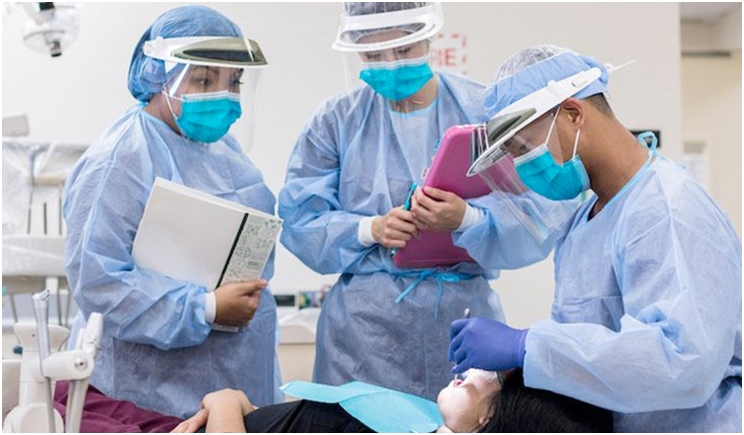
Emergency treatment may not be the most exciting aspect of dentistry, but it is arguably one of the most important—for you and your patients.
From the patient’s perspective, no one likes having a toothache, but everyone loves getting rid of it. From the dentist’s perspective, these procedures might not be your favorite or most profitable, but emergencies can lead to many new (long-term) patients.
As dental practices struggle to stay afloat amid COVID-19 concerns, emergency dentistry has taken on a whole new level of importance. In fact, there is probably no better time to revamp and ramp up your marketing in this area.
Keeping the Doors Open in a Closed Economy
Depending on where you are located and when you read this, your town may or may not be under some form of lockdown. Even when those orders lift, risks and fears will persist for the foreseeable future.
However, patients and policymakers alike consider emergency treatment essential. Focus on strategies that will keep these emergency patients coming through the door, which may be the key to keeping your practice afloat in difficult times:
- Public service announcements (PSAs): The greatest threat posed by COVID-19 is overwhelming the healthcare system, especially emergency facilities. Remind people that they do not need to visit the emergency room for dental issues. Let them know that you are available for emergencies and that your office isn’t crowded.
- Emphasize safety practices: Some people, particularly those with compromised immunity, will be tempted to postpone treatment even in an emergency. Reassure them by explaining your high standards of sanitation, new protocols you have implemented, and your general dedication to patient safety.
- Offer telehealth options: There are two types of dental emergencies: “That hurts so bad, I need help now” and “This could be serious, so maybe I should see a dentist.” Videos, photos, or even text descriptions of symptoms often are sufficient for you to advise patients about when treatment is needed or provide instructions for home care. Virtual consultations can even extend to cosmetic and other elective treatments a patient is planning to schedule later.
- Make the most of community involvement: In tough times, people come together to support each other. Use your social media accounts and other channels to voice your support for area businesses, remind people to patronize restaurants that are still open, share important public health information, and discuss any contributions you have made. This not only helps keep the line of communication open with your patient base, but it also showcases your leadership and community spirit.
Never Underestimate the Power of SEO
A person planning cosmetic treatment or considering dental implants might take time, do some research, learn about the procedures, and choose a provider carefully. However, people experiencing emergencies just want help quickly. As we all know, one of the fastest ways to get an answer is to ask Google.
A quick search should bring up a long list of nearby dental offices accepting emergencies. With a few clicks and a phone call, treatment is scheduled, probably the same day. In this scenario, you do not have many opportunities to reach the patient. If your practice doesn’t rank well for keywords related to emergency dentistry, you will lose this lead and many others. Here’s what you need to do:
- Increase your local search visibility: Revisit the basics of local search engine optimization (SEO). This includes making sure your practice is listed on Google My Business and applicable directories, correcting NAP (name, address, and phone number) inconsistencies and encouraging patients to review your practice.
- Correct technical issues: Google’s algorithms are designed to serve up the best websites. That means problems such as poor mobile compatibility, lack of cohesive navigation, website errors, and slow loading times can cost you top spots in search results, no matter how good your content may be.
- Choose relevant keywords: The impact of the pandemic extends far beyond health risks, and people’s lives are changing in unexpected ways on a near-daily basis. Not surprisingly, their search patterns are also changing. Research keywords thoroughly and regularly and create relevant content. Consider what questions patients are likely to have and how you can answer them. For example, is dental treatment safe? How do virtual consultations work? Are dentists’ offices safe? Can coronavirus be transmitted by sharing a toothbrush holder? These and similar topics can make good blog posts, videos, or social media notes.
Final Thoughts
Be mindful of the tone and message that your marketing materials carry. One of the most prevalent side effects of the entire situation is stress. People are worried, not only about their oral health, but also about their jobs, their children’s education, their families’ safety, and much more.
Whether you are having a one-on-one conversation or creating articles for publication, be extra cautious to avoid potentially offensive or divisive statements. Remember that people are on edge. Now is the time to demonstrate compassion and trustworthiness.
Mr. Arulrajah, president and CEO of Ekwa Marketing, has been a leader in medical marketing for more than a decade. Ekwa provides comprehensive marketing solutions for busy dentists, with a team of more than 180 full-time professionals, providing web design, hosting, content creation, social media, reputation management, SEO, and more. If you’re looking for ways to boost your marketing results, call (855) 598-3320 for a free strategy session with him.
Related Articles
Dentists, Inflammation, and COVID-19 Risks
Tennessee Practices Reopen While Massachusetts Waits
COVID-19 Is Changing Dentistry, and Our Office Is Changing With It











